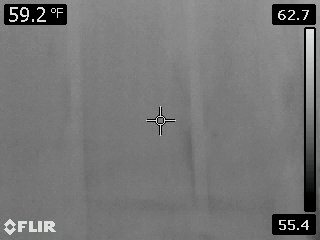After several days of running two 70pt / day dehumidifiers the indoor humidity reached a more tolerable 35%, however the fiberglass insulation remained soaked.
I decided that the potential for trapping moisture in the walls where it would cause mold simply wasn’t worth the risk. The newly installed drywall pulled off the walls to expose the studs so the fiberglass could be removed and disposed of.

In-place of the fiberglass, I filled the 2×4 stud bays with Roxul R-15 insulation. The Roxul insulation is quite interesting. The batts themselves are brown in-color with rigidity similar to a loaf of bread. The rigidity and color of the batts come from the fact that they are made of stone wool. This makes them naturally hydrophobic and fire resistant while achieve a slightly higher r-value than fiberglass.

Between the Roxul and layer of foam, the wall achieves an R-26 insulating value. The well-insulated wall combined with the extremely low .74 ACH air leakage rate should result in an ultra-efficient envelope that will be warm (or cool) and cozy while requiring the energy equivalent of a hair dryer to heat!
A well insulated wall looks like the following on the thermal imaging camera

